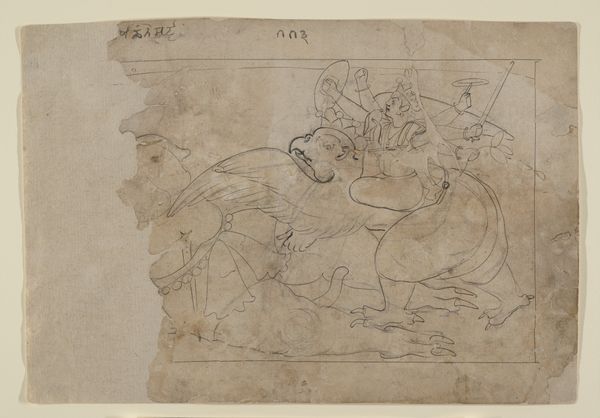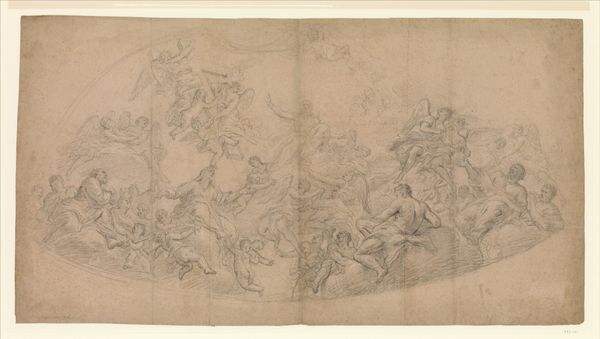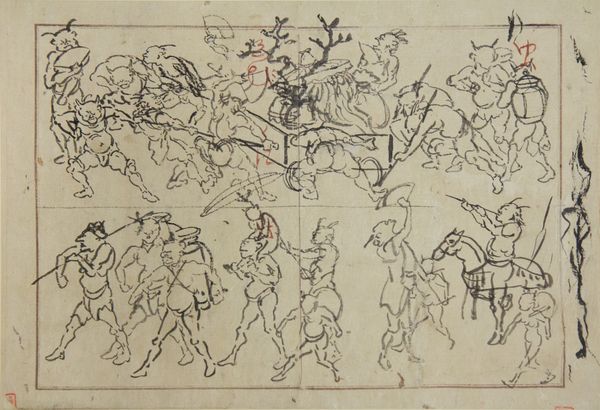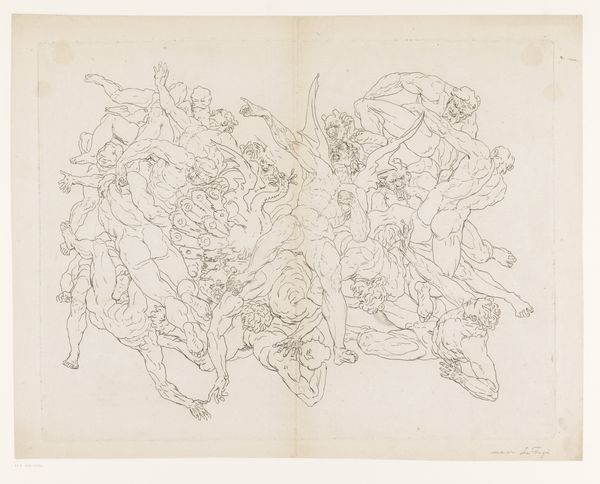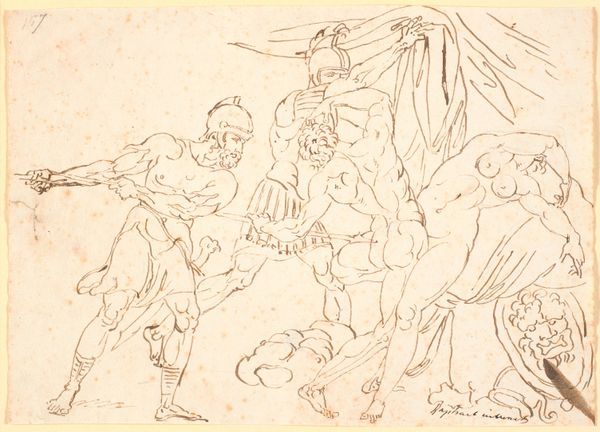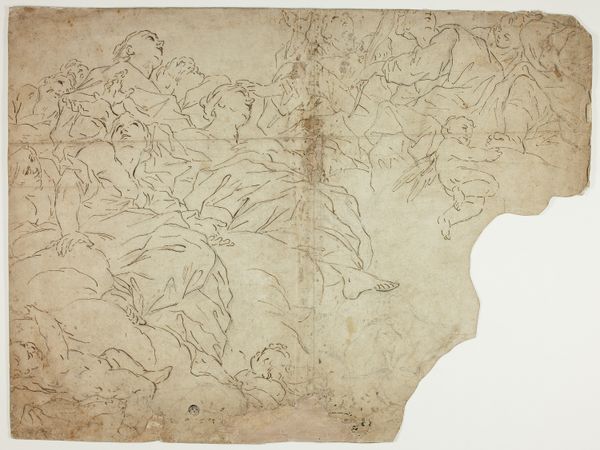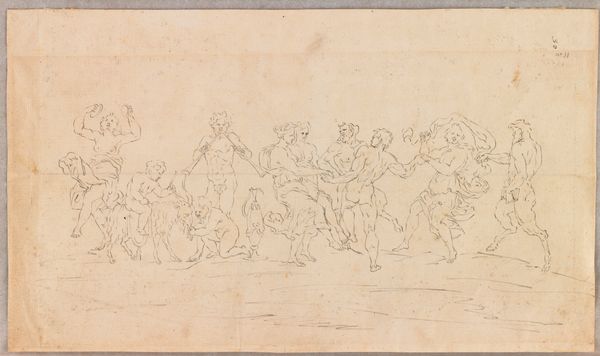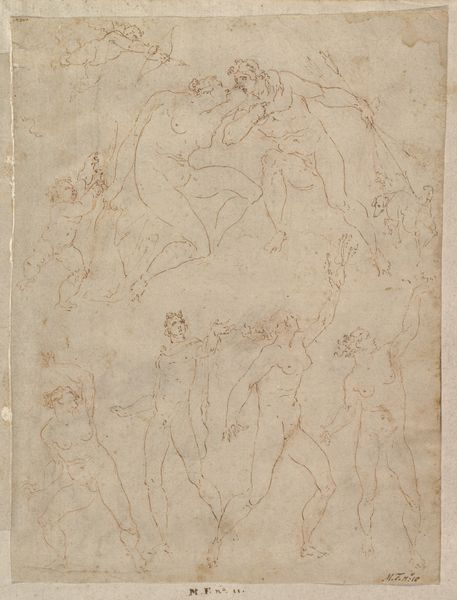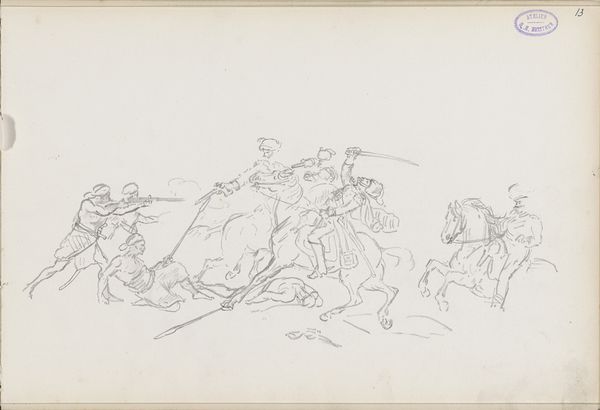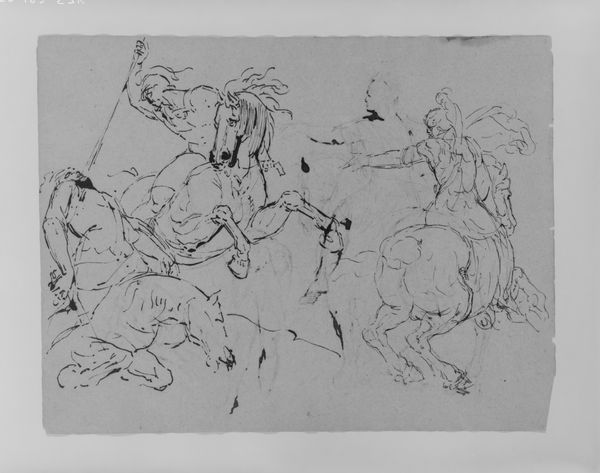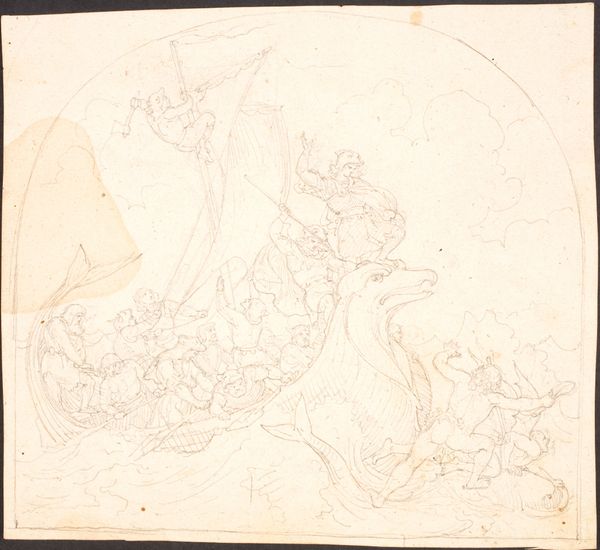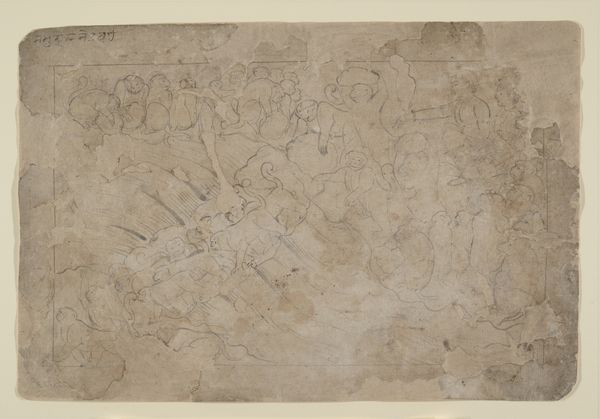
drawing, ink, pen
#
drawing
#
allegory
#
baroque
#
ink painting
#
figuration
#
ink
#
pen
#
history-painting
Dimensions: 11 3/4 x 14 11/16 in. (29.85 x 37.31 cm) (sight)18 5/8 x 20 1/4 in. (47.31 x 51.44 cm) (outer frame)
Copyright: Public Domain
Editor: So, here we have an 18th-century pen and ink drawing, "Fall of the Rebel Angels". It’s an anonymous piece, but the dramatic, swirling composition really caught my eye. What’s your take on this work? Curator: I see a fascinating negotiation of power and production. Look at the furious energy captured solely with pen and ink. An inexpensive media for the study, likely intended for a grander finished product. Think about the artist’s labour, the sheer time spent hatching these lines. Consider also the social context: the demand for such religious scenes, the system of patronage, which shaped what artists created and how. Editor: Patronage, right, like who was commissioning these works and why? Was it just religious institutions? Curator: Not necessarily "just" them, but certainly that was one dominant market sector in that era, as was aristocratic consumption and displays of wealth and power. Did the commissioner dictate the visual presentation or did the artist make creative choices on the style? Those social and material considerations dictated the labor expended and, therefore, its artistic quality and value. The Baroque style emphasizes dynamism; its purpose, historically, was rooted in illustrating narratives promoting the religious, moral or political dominance. The materials chosen and artistic style merge to create propaganda that shaped the way society and culture expressed its material dominance through displays of artistry. What do you make of this tension between artistry and propaganda? Editor: It's almost like the raw quality of the drawing reveals the labor, and it becomes harder to ignore the manipulative aspects when you see the actual work that went into it. I was focused on the scene, but now I see how much the context of its creation matters. Thanks! Curator: Indeed. By shifting our focus to the means of production, we can unpack so much more about the power dynamics embedded in even seemingly straightforward religious art.
Comments
No comments
Be the first to comment and join the conversation on the ultimate creative platform.
